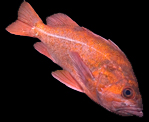
Anchor Farm
Discovered by serendipity in early 2004, the anchor farm's main feature was four multi-ton large ship anchors connected to each other and a number of large concrete blocks with substantial chain. Three of the four anchors were dragged to another location some 600 feet away when a cruise ship mired its own anchor in the collection. Happily, this location survives on other merits. Part of the vast network of shale ledges that extend for miles off Monterey's Del Monte beach, the Anchor Farm is home to sundry species of nudibranchs seldom seen elsewhere on the Monterey peninsula.
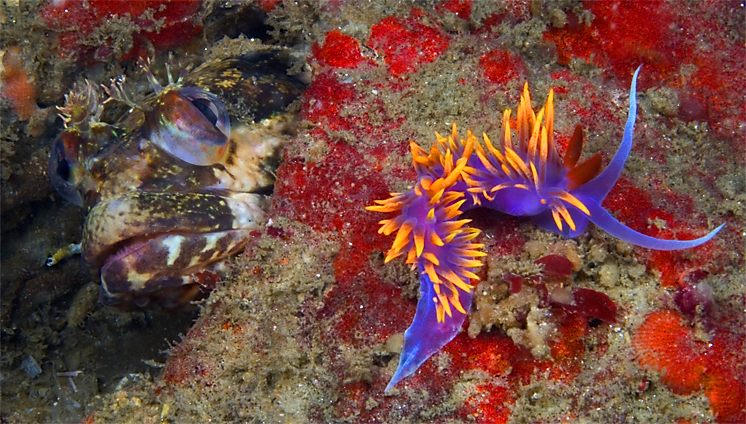
This spanish shawl (Flabellina iodinea) appears to be in danger of
becoming a colorful snack for a onespot fringehead (Neoclinus
uninotatus). Thankfully for the shawl, its wild coloration is indicative of
it's ability to sting potential predators. Spanish shawls rove the reef in
search of the hydroids upon which they feed. Interestingly enough, a shawl's
stinging ability comes from special cells called nematocysts which are captured
from prey and passed through the digestive system without being discharged. It's
possible that this fringehead wasn't interested in the passing slug because it
was familiar with its defense mechanism. However, I suspect that it's more
likely the fish was entirely unaware of its visitor. Fringeheads, apparently,
have poor eyesight. I've seen them out hunting -- they're quite prone to
mistaking rocks for prey.
"Anchor Farm", Monterey Bay, California
December 4, 2004
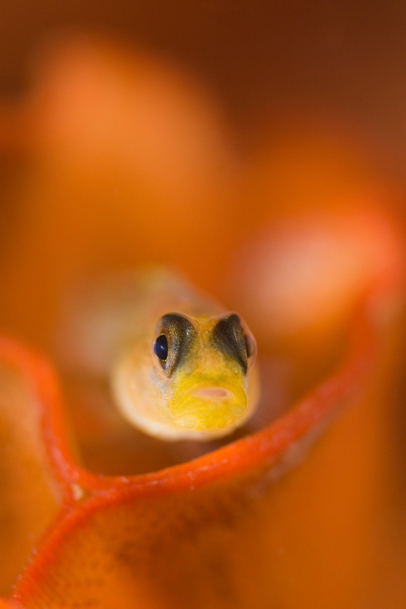
Blackeye gobies (Coryphopterus nicholsi) spend most of their time resting
on some surface, waiting for something interesting to happen.
"Anchor Farm", Monterey Bay, California
March 3, 2007
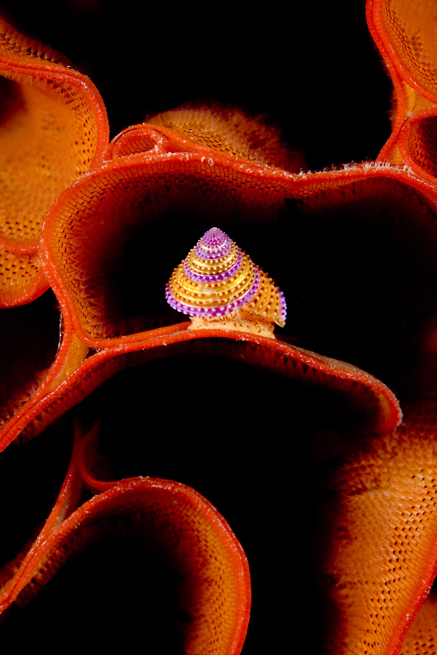
A jewel top snail (Calliostoma annulatum) cruising through a colony of
bryozoans. If you look closely, you may notice the individual bryozoan polyps.
This shot takes advantage of something that's usually a great source of
frustration for the underwater photographer. Since light that's in-line with
the camera lens produces excessive backscatter, strobes are almost always
positioned off to one side. However, this makes it difficult to illuminate the
interior of holes like the ones you see here. In this case, most everything of
interest is near the lip of each hole and the unilluminated recesses contrast
nicely with the rest of the image.
"Anchor Farm", Monterey Bay, California
March 10, 2007
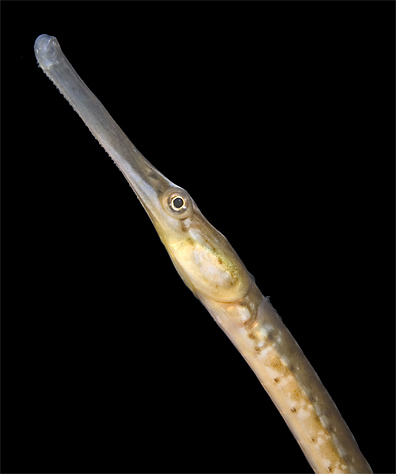
In the silted out conditions of my first dive with a camera, this pipefish
(Syngnathus sp.) was, in fact, the only fish I even saw. Thankfully,
pipefish are horrible swimmers, and, as such, often have little choice but to be
cooperative photographic subjects.
"Anchor Farm", Monterey Bay, California
November 14, 2004

Home
